Green Shores | Case Studies
Piper’s Lagoon, City of Nanaimo, British Columbia

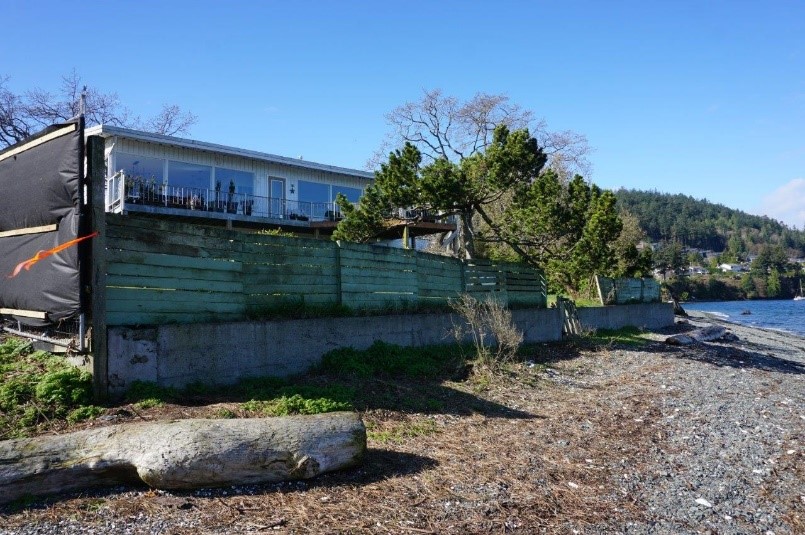
Before
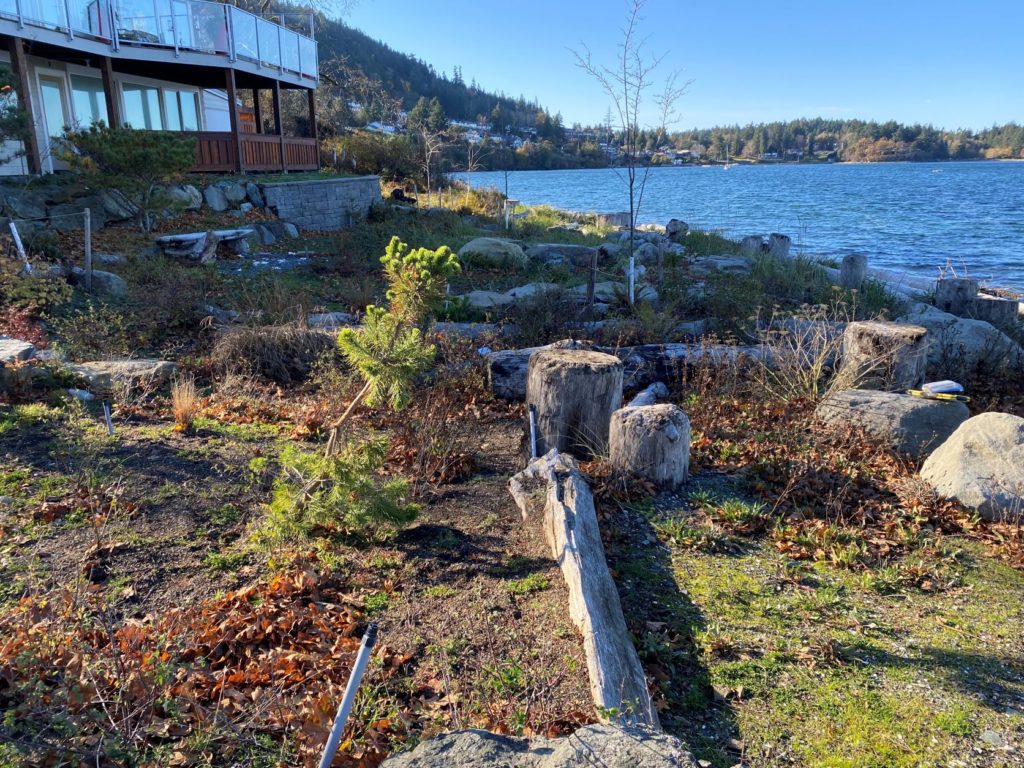
After
| Location: City of Nanaimo, BC | Project area: Whole site project |
| Year completed: 2020 | Awards: NA |
| Shoreline length: 24.5 m | Shore type: Marine, fine sediment with cobble and small boulder substrate |
| Green Shores rating achieved: Orca (Level 2) | Total points: 51 |
Site Description
The property lies on shoreline adjacent to the City of Nanaimo Piper’s Lagoon Waterfront Park, located in the NE part of Nanaimo. Shack Island which is within the park, lies just offshore of this property and provides shelter from the prevailing winds off the Strait of Georgia. Unique patterns of ocean current and abundant use of the foreshore by waterfowl also characterize this site. The low bank beach is gently sloped with sand and cobble-sized material. The overall site is within an intact Garry Oak ecosystem, and the property includes some Garry Oak trees recognized as Significant Trees under the City of Nanaimo’s Management and Protection of Trees Bylaw 2013 (No. 7126). These were preserved during the development.
Project Team and Affiliated Organizations
- Project Lead and Landscape Architect: Victoria Drakeford
- Design Build General Contractor: Knappett Industries Ltd.
- Environmental Impact Assessment: Toth and Associates Environmental Services
- Native Plant Supplier: Green Thumb Nursery and Saanich Native Plants
Project Objectives
- Remove the bulkhead and restore the foreshore with natural materials and native vegetation to stabilize against erosion and create shoreline habitat.
Work Plan
The old concrete bulkhead with a fence along its top, was significantly reducing shoreline function by interrupting movement of materials and fauna between upper and lower slope, and by impacting sediment transport along the shoreline. High tides would interface with the bulkhead, creating scouring along its edge.
With the bulkhead, fence, and an old buried, non‑functioning septic system removed, the slope was regraded and planted with extensive native vegetation. Additionally, several large rocks and pieces of large woody debris were placed throughout the newly designed riparian area creating protection against wave energy, micro‑habitat for flora and fauna, and increased aesthetic appeal.
In the upland, a paved driveway was replaced with pervious gravel, and overall site drainage was improved including use of roof rainwater for irrigation.
Description of how the project meets Green Shores principles
> Maintained/ Enhanced Habitat Function and Diversity
- Restoration of approximately 458 m2 of riparian area was completed with removal of lawn and invasives, followed by planting with native species including dune grass, beach pea, gumweed and Nootka rose. Other restoration materials included beach rock and woody material of varied size and diameter; used to create microsites for native vegetation establishment and habitat for shoreline invertebrates.
- Large overhanging Garry Oaks were retained, and other small trees (e.g. shore pine) were planted creating sources of food from fallen leaf material.
> Preserved/Restored Shoreline Physical Processes
- A concrete bulkhead with a wooden fence attached to the top along almost the entire length, was removed. Remnants of a previously used septic system were removed from the soil, and the entire riparian area was regraded using existing beach materials.
- Tidal function was fully restored through removal of the bulkhead.
- Large woody material was retained, and small boulders and new stumps and logs were placed higher on the slope to protect the shore through dissipation of wave energy.
> Ecological Services Provided
- Shoreline stabilization and erosion control.
- Habitat creation, increased infiltration and provision of food sources for shoreline invertebrates from planted native vegetation.
> Shoreline Collaboration and Public Education
- Some informal discussions have been undertaken with a neighbor planning to build on the empty lot to the northwest, as well as members of the Nanaimo City Parks Department who manage the Piper’s Lagoon park to the southeast side of the property. Signage is planned for summer 2021 to provide an educational opportunity about the objectives of Green Shores. Overall public access from the park to the shoreline has been improved, including a wheelchair access. Numerous compliments from park visitors have been received about the improved aesthetics and function of the shoreline at this site.
Photo Gallery
You can click on any photo to view it on full screen.

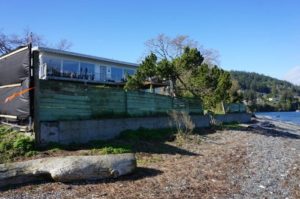
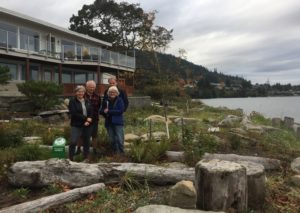
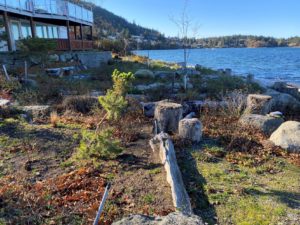


Pingback: Lantzville Shoreline Protection and Building a Green Residential House – Environmental Geology Field Trips GEOL312
Pingback: A Little Glance at Lantz(ville) – GEOL 312: Jakes Hot Takes
Pingback: Field Trip 6: Lantzville Green Shores and Green Houses – A Journey Through Geol 312: Environmental Geology